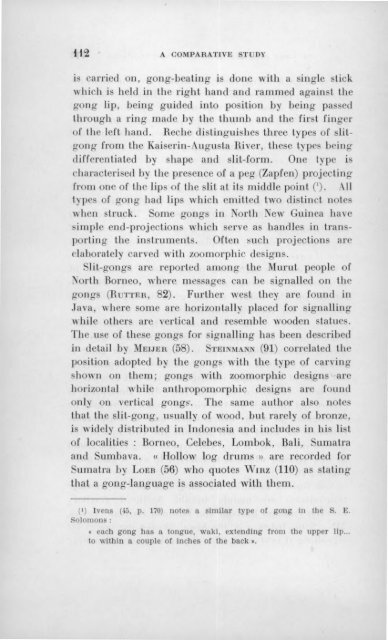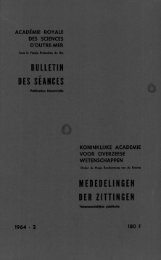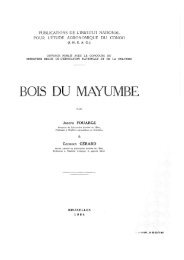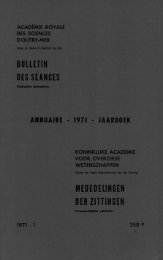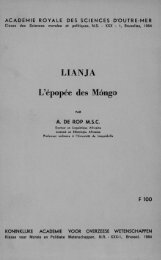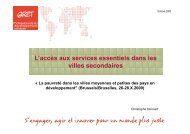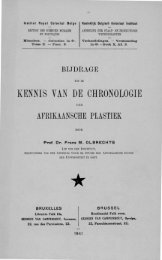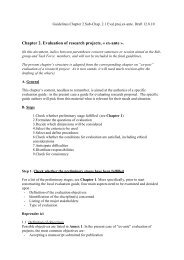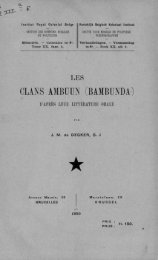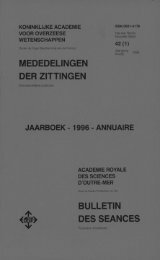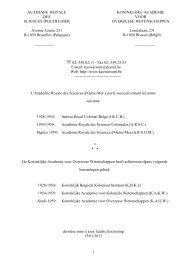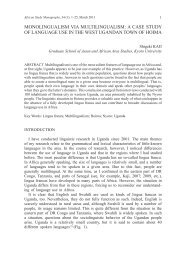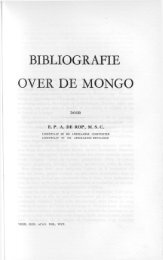CENTRAL AFRICAN GONG-LANGUAGES
CENTRAL AFRICAN GONG-LANGUAGES
CENTRAL AFRICAN GONG-LANGUAGES
- No tags were found...
Create successful ePaper yourself
Turn your PDF publications into a flip-book with our unique Google optimized e-Paper software.
1 1 2 A C O M P A R A T IV E STUDYis carried on, gon g-beatin g is doue w itb a single stickw hich is held in the right hand and ram m ed against theg o n g lip, bein g guided into position by being passedthrough a rin g made by the thuinb and the first fingerof the left hand. Reche distinguishes three types of slit -g o n g from the Kaiserin-Augusta River, these types bein gdifferentiated by shape and slit-form . One type iseharacterised by the presence of a peg (Zapfen) projeclin gfrom one of the lips o f the slit at its m iddle point ('). \I1types of gon g had lips w hich emitted two distinct noteswhen struck. Some gongs in Nortb N ew Guinea havesimple end-projections w hich serve as handles in transporling the instruments. Often such projections areelaborately carved with zoomorphic designs.Slit-gongs are reported am ong the M urut people ofNortb Bornéo, where messages can be signalled on thegongs ( R u t t e r , 82). Further west they are found inJava, where some are horizontally placed for sign allin gw hile others are vertical and resem ble wooden statues.The use of these gongs for sign allin g has been describedin detail by M e i j e r (58). S t e i n m a n n (91) correlated theposition adopted by the gongs with the type of carvingshown on tliem; gongs with zoom orphic designs arehorizontal w hile anthropom orphic designs are foundonly on vertical gongs1. The same author also notesthat the slit-gong, usually of wood, but rarely of bronze,is widely distributed in Indonesia and includes in his listof localities : Bornéo, Celebes, Lom bok, Bali, Sumatraand Sum bava. « H ollow log drum s » are recorded forSumatra by L o e b (56) w ho quotes W i r z (110) as stalingthat a gon g-lan guage is associated with them.(J) Ivens (45, p. 170) notes a similar type of gong in the S. E.Solomons :« each gong has a tongue, waki, extendlng from the upper lip...to within a couple of inches of the back ».


